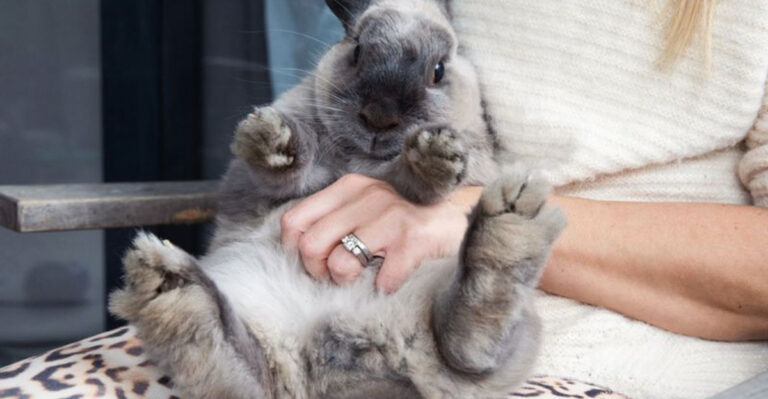Clicker Training 101: Follow These 15 Rules To Train Your Cat Like A Pro
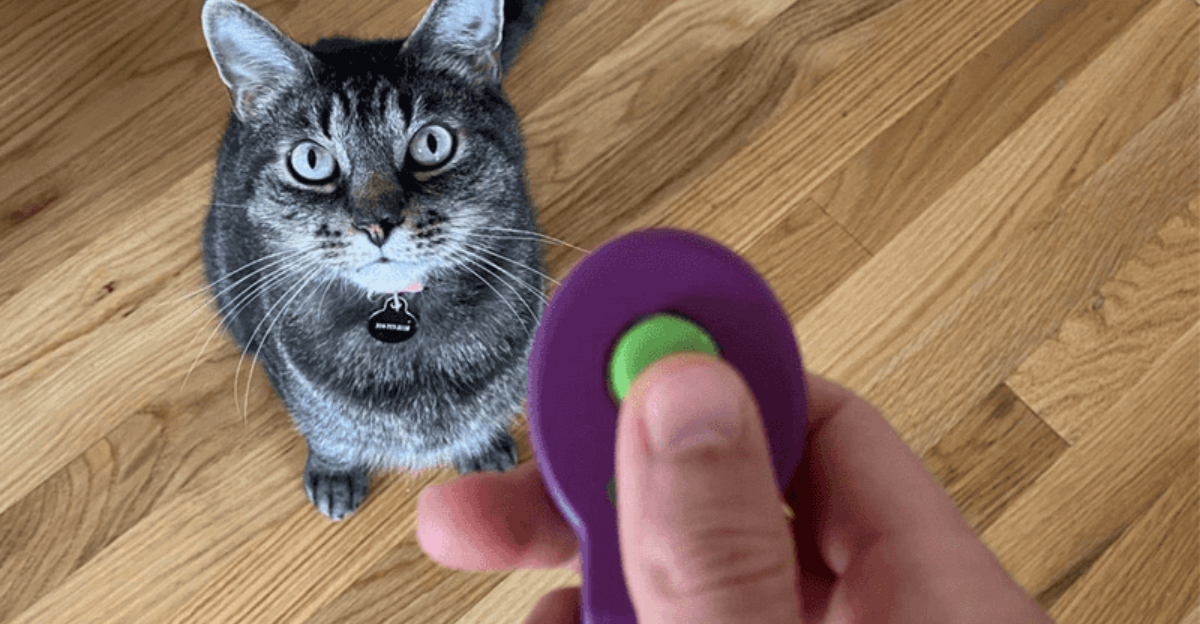
Ever thought that cats are untrainable? Think again! Unlike their canine counterparts, cats have a reputation for being independent and stubborn.
But with the right techniques, you can teach your feline friend to perform tricks, follow commands, and even solve behavior issues.
1. Start With Simple Commands
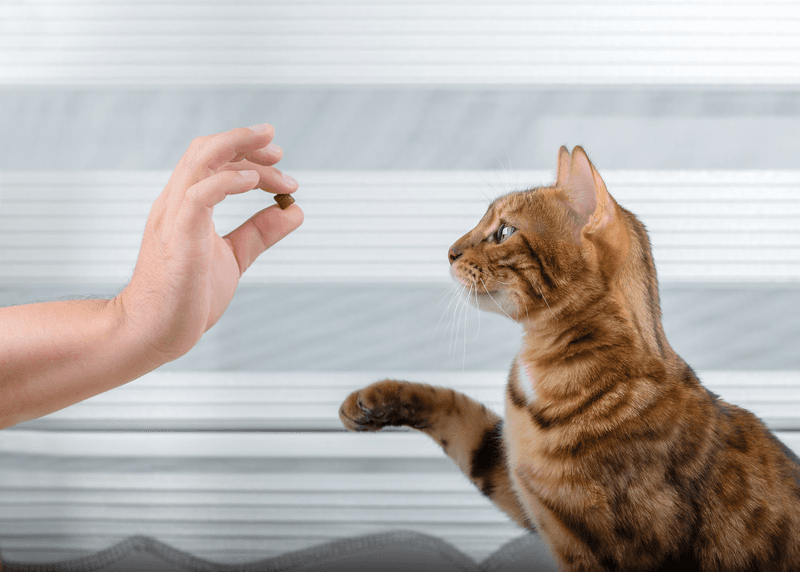
Cats, while independent, can learn simple commands like “sit” and “come.” This foundation helps them understand the clicker’s meaning. Starting with these basics makes the training process smoother.
Next time, instead of fighting with your cat, teach them to comply with your commands. How satisfying it is when your cat responds to you! Start with these small steps, and you’ll see progress in no time.
2. Keep Training Sessions Short
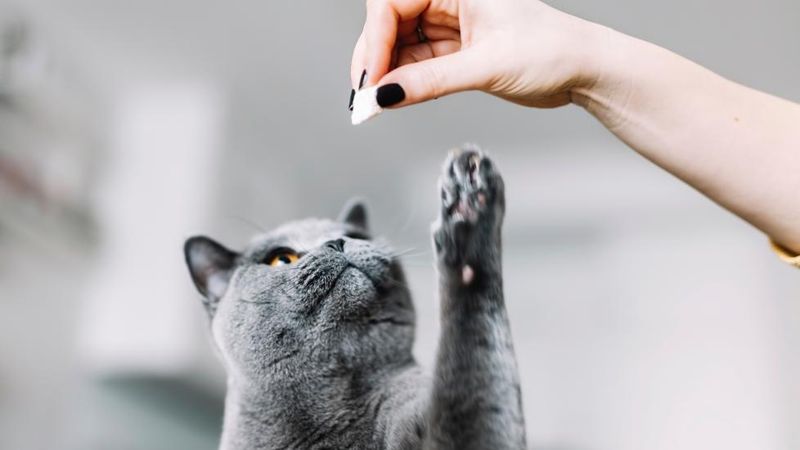
Cats have short attention spans, much like toddlers. Training sessions should last only 5-10 minutes. Overextending can frustrate both you and your cat. Keeping it brief ensures that your feline friend remains engaged and eager to learn.
Remember, it’s quality over quantity. A few focused minutes are more effective than prolonged, tedious sessions. This way, training becomes a joyful ritual for both parties.
3. Use High-Value Treats
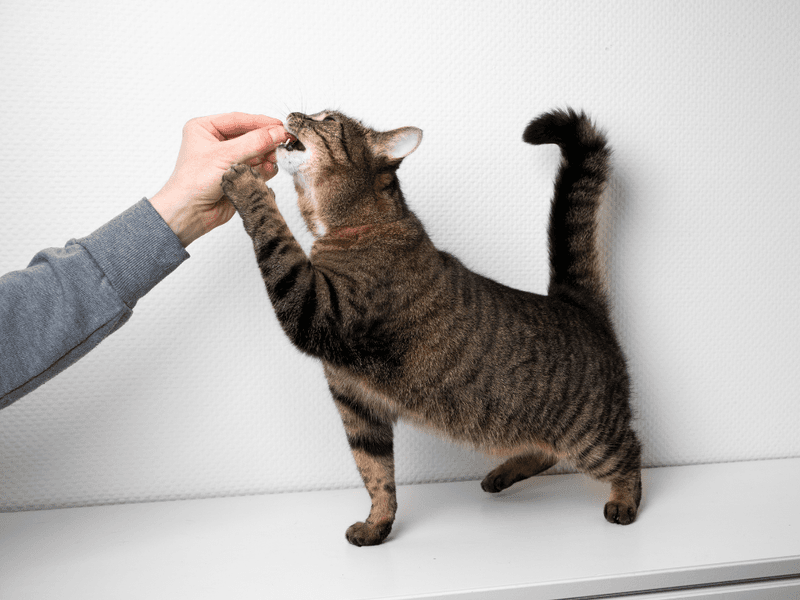
Want your cat to learn fast? Use their favorite treats as rewards. High-value treats make a cat’s learning experience more enjoyable and effective. Think of it as an irresistible motivation!
When your kitty knows they’ll get something special, they’re more likely to focus and perform. It’s like offering a gourmet meal instead of a plain snack. Keep those treats handy, and watch your cat’s skills blossom.
4. Click Immediately After Desired Behavior
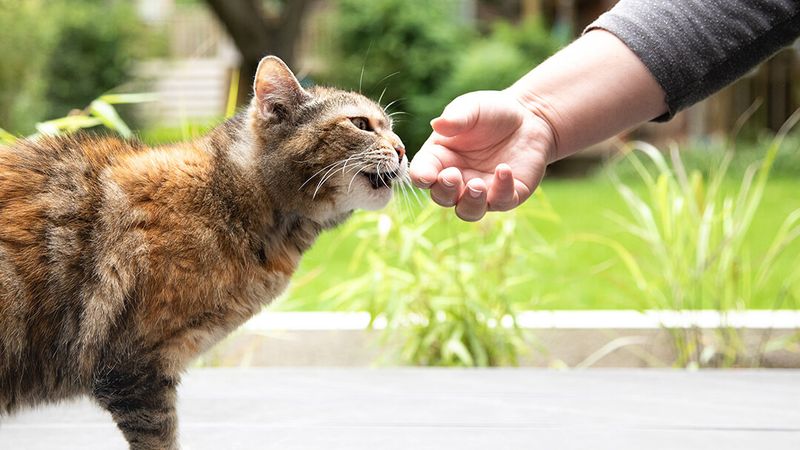
Timing is everything in clicker training. The magic happens when you click the moment your cat performs the desired behavior. This association helps them link the sound to the action and the ensuing reward.
It’s like capturing a perfect shot with your camera—catch it at the right moment. This immediate feedback ensures your cat understands what they did right and encourages future success.
5. Be Consistent With The Clicker
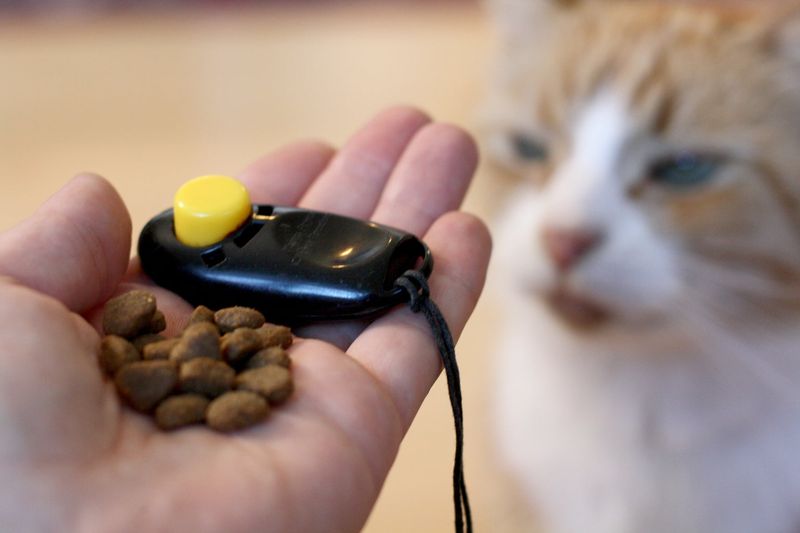
Consistency is the backbone of effective training. Always use the clicker for the same behaviors to avoid confusion. It’s like using the same word for a command—your cat will come to associate the sound with the action.
Over time, this builds a reliable communication bridge between you and your cat. Ensure you’re sending clear, consistent messages, and your feline will understand you better.
6. Use Positive Reinforcement
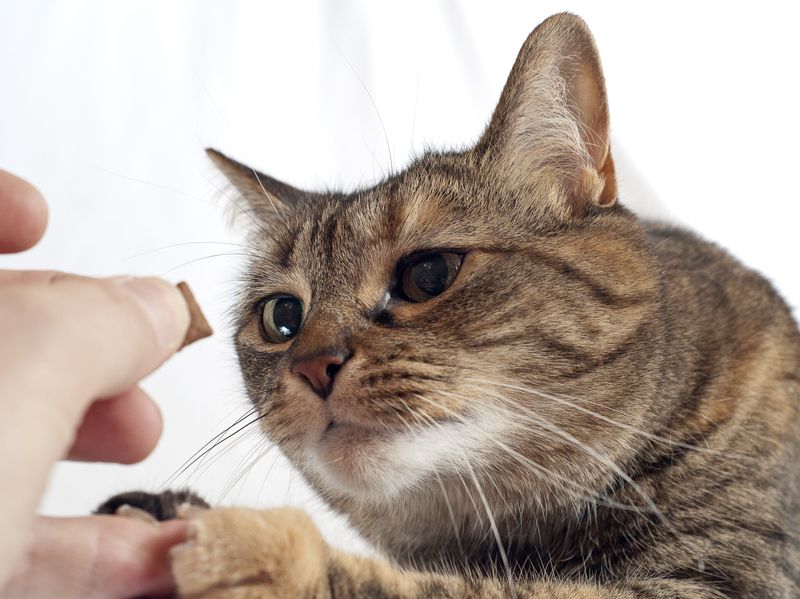
Cats thrive on positive reinforcement. Rewarding good behavior, rather than punishing mistakes, builds trust. It’s the same happiness you feel when someone praises you for a job well done.
This approach keeps your cat motivated and eager to learn. A gentle pat, a kind word, or a favorite treat can work wonders. Celebrate their successes, however small, to reinforce their good behavior.
7. Avoid Overtraining
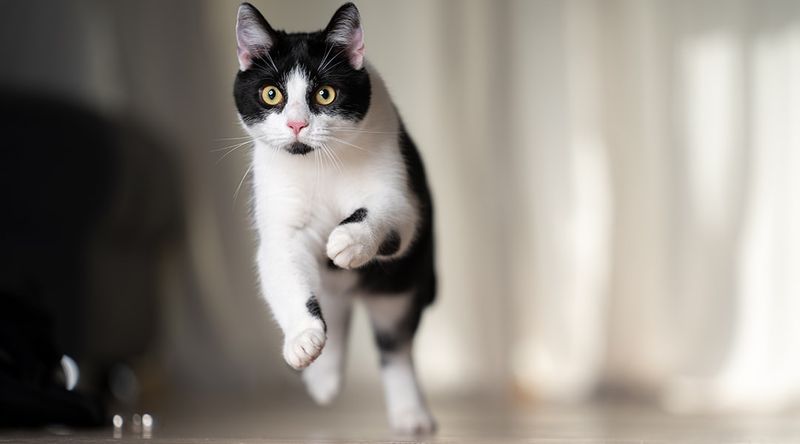
Even the most eager cats need rest. Overtraining can lead to stress and burnout. Allow your cat time to absorb what they’ve learned. This ensures training remains a fun and stress-free experience.
Think of it like needing a break after a long day at work. A well-rested cat is a happy and eager learner. Balance is key to maintaining their enthusiasm and progress.
8. Pair The Clicker With Treats
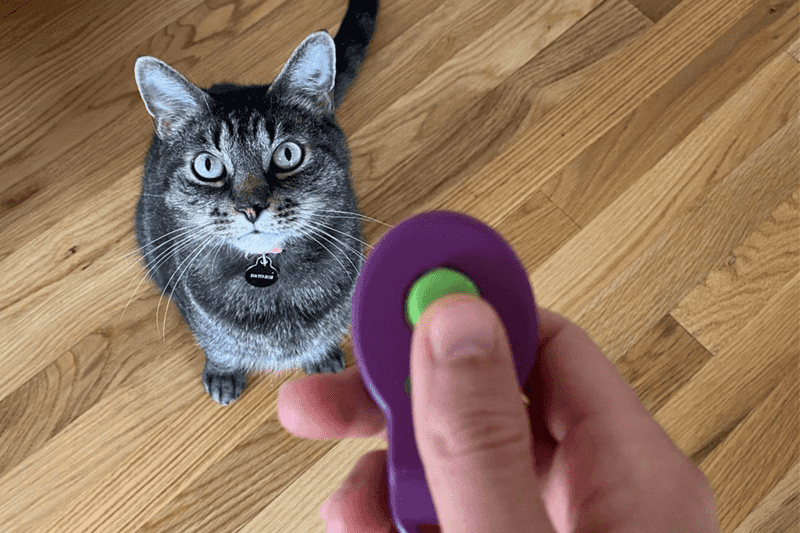
Initially, pair the clicker sound with a treat. This helps your cat associate the sound with a positive outcome. It’s like Pavlov’s bell—condition them to expect something good. As the sound becomes familiar, it reinforces the desired behavior.
Your cat will soon look forward to the click, knowing a treat is sure to follow. This method cements the connection between action and reward.
9. Gradually Increase Difficulty
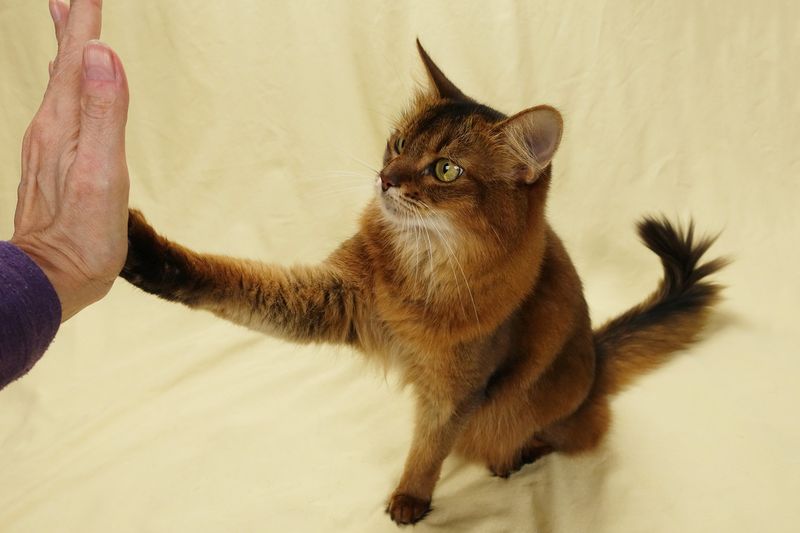
As your cat masters basic commands, introduce more complexity. Combine actions or introduce distractions to keep them challenged. It’s like progressing from simple math to complex equations.
Gradually, your cat becomes more skilled and confident. This approach keeps their training engaging and rewarding. Challenge their clever minds with new tasks, and enjoy watching their growth.
10. Use Clicker Training For Fun And Bonding
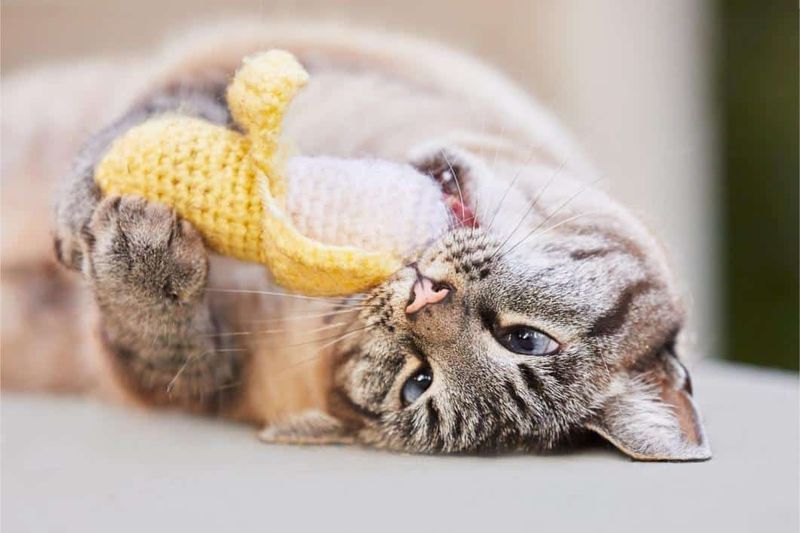
Training isn’t just about commands—it’s a bonding experience. Clicker sessions can strengthen your relationship with your cat. Those moments of learning and fun create lasting memories. Think of it as playtime with a purpose.
As you both enjoy the process, your bond becomes stronger. This shared journey enhances trust and understanding, creating a harmonious home environment.
11. Train In A Quiet, Distraction-Free Area
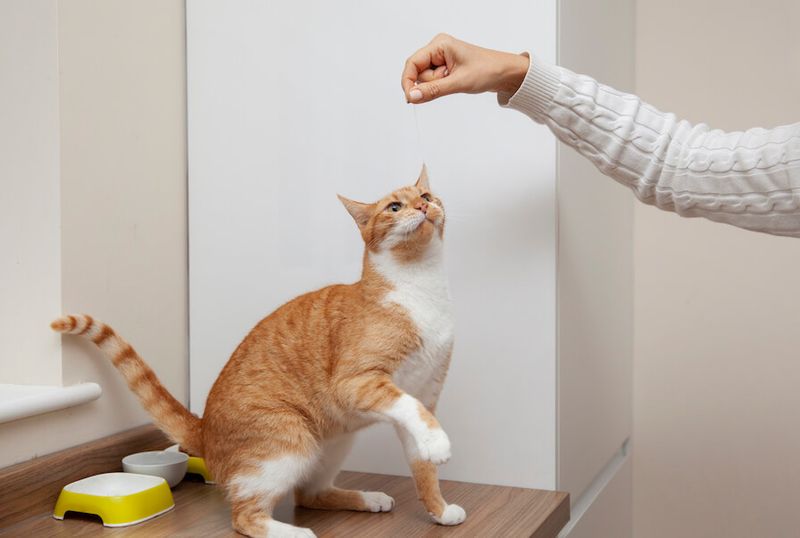
A peaceful environment is key to effective training. Start in a quiet area where your cat can focus without distractions. It’s like trying to read in silence versus a noisy café.
Once they’re skilled, gradually add distractions. This transition helps them learn to concentrate in any setting. Create a calm atmosphere for focused learning, and watch your cat thrive in their training.
12. Be Patient And Give Your Cat Time

Cats learn at their own pace. Patience is crucial in this journey. Avoid showing frustration; positive emotions help keep your cat engaged. It’s similar to nurturing a plant—it grows in its own time. Encouragement and gentle guidance lead to success.
Allow space for mistakes, and celebrate small victories. This patience fosters a positive learning environment where your cat feels supported.
13. Reward Small Steps Toward The Goal
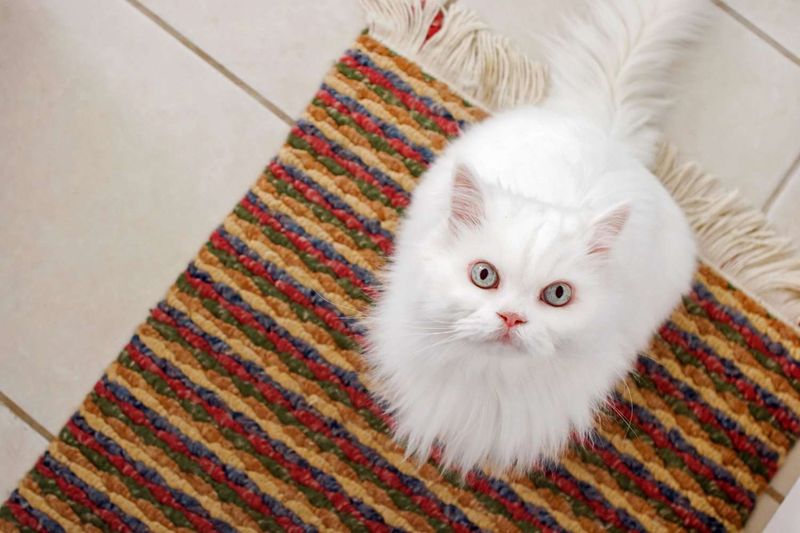
Break down complex behaviors into small steps, rewarding each one. This method helps cats feel progress and keeps them motivated. Imagine climbing a mountain one step at a time. Each small victory propels them toward bigger achievements.
Use treats, praise, or affection to acknowledge these steps. This strategy builds confidence and encourages continued effort, paving the way for success.
14. Use Clicker Training For Behavioral Problems

Clicker training isn’t just for tricks. It can address behavioral issues, like scratching or jumping on counters. Redirecting bad behavior with positive reinforcement makes a difference.
It’s like steering a ship on the right course. Reward good behaviors to replace unwanted ones. This approach empowers you to manage and improve your cat’s habits effectively, creating a peaceful home.
15. Gradually Fade Out Treats
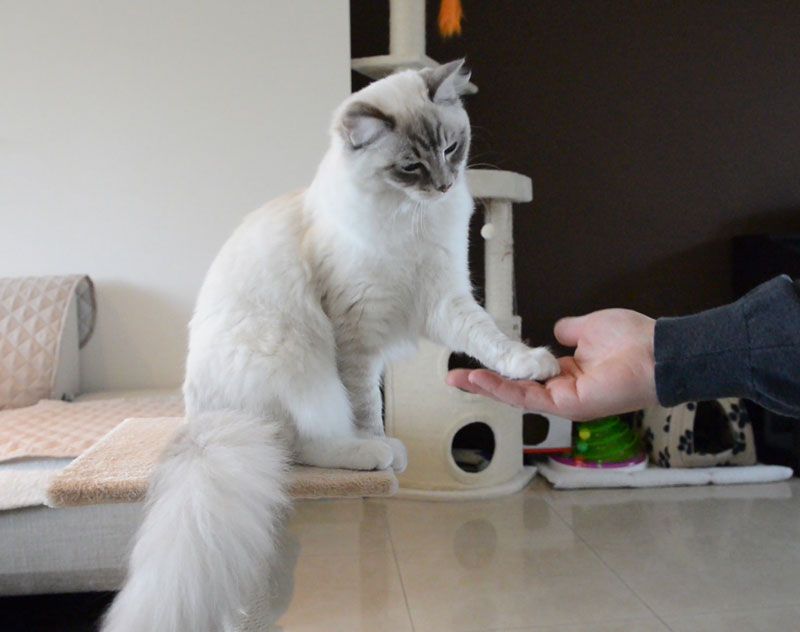
As proficiency grows, reduce treat frequency. This teaches your cat that the clicker itself is rewarding, not just the treat. It’s like transitioning from candy to verbal praise. Gradually, your cat will perform for the click’s sound, not just the snack.
This method fosters a deeper understanding and bond between you and your cat. They’ll learn that pleasing you is rewarding in its own right.






